Why dry-aged beef tastes better.

First, a brief run-down on why you might want to age meat. Conventional wisdom cites three specific goals of dry-ageing meat, all of which contribute toward improving it's flavour or texture.
Moisture loss might be a major one. A dry-aged piece of beef can lose up to around 30% of its initial volume due to water loss, which concentrates its flavour. At least, that's the theory.
Tenderising occurs when enzymes naturally present in the meat act to break down some of the tougher muscle fibres and connective tissues. A well-aged steak should be noticeably more tender than a fresh steak.
Flavour change is caused by numerous processes, including enzymatic and bacterial action, along with the oxidation of fat and other fat-like molecules. Properly dry-aged meat will develop deeply beefy, nutty, and almost cheese-like aromas.
What cut of meat should I buy for Ageing?
To age meat properly, you need to choose a large piece that is best cooked with quick cooking methods. This makes the standard steakhouse cuts the New York strip (Porterhouse Steak), The rib steak (OP Rib or Scotch Fillet), and the T-Bone Steak are the ideal cuts for ageing. These 3 Meats are the easiest to find whole, other wise known as "Primals" (my personal favourite). This is what you get when you cut a prime rib between the bone into individual steaks.
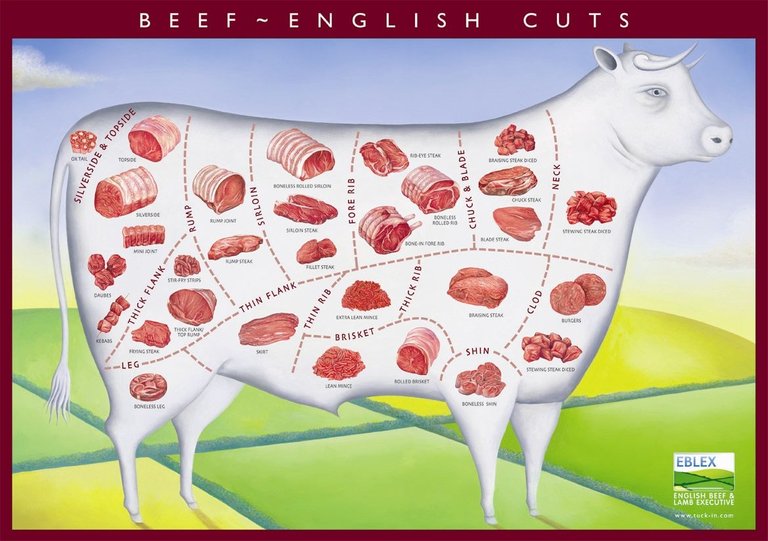
What is the minimum size I'll need to buy for proper ageing of my meat? Can I age an individual steak?
No, unfortunately, you can't age individual steaks. You can wrap them in cheesecloth or paper towels, set them on a rack, and leave them in the fridge for about a week, but during that time, no detectable level of texture or flavour changes will take place. Try to age them even longer, and assuming they don't start rotting, here's what you get:

The meat is so dried out as to be almost completely inedible. After trimming away the desiccated and slightly mouldy bits (perfectly normal for dry-aged meat), You are left with a sliver of meat about a half centimetre thick. It was impossible to cook to anything lower than well-done, making the effective yield a big fat zero.
The simple truth is that in order to dry-age, you need larger cuts of meat (Primals).
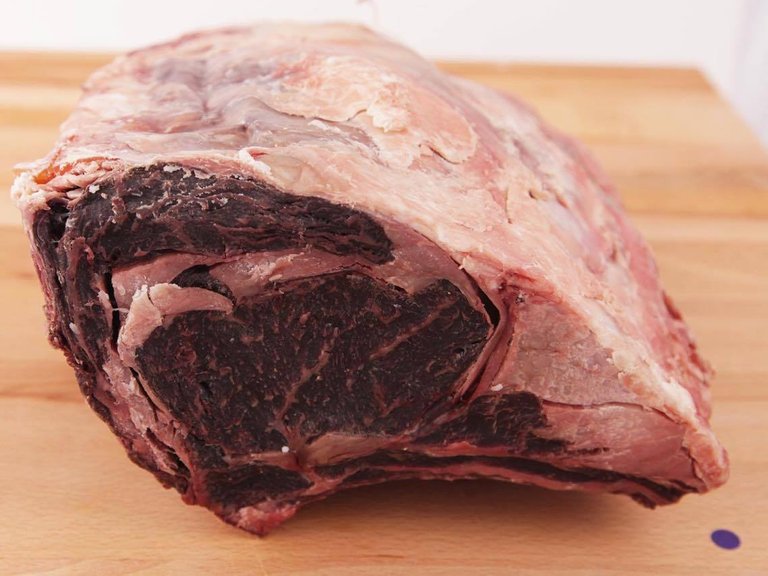
So why does meat that's being aged stop losing moisture after the first few weeks?
It's a matter of permeability. As meat loses moisture, it's muscle fibres get more and more closely packed, making it more and more difficult for moisture under the surface to continue escaping. After the first few weeks, the outer layer of meat is so tight and tough that it is virtually impermeable to moisture loss.
Take a look here:
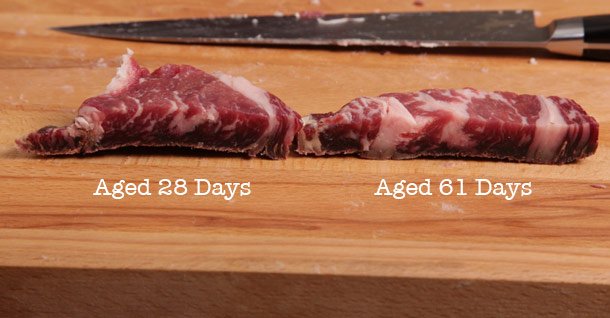
You can see that the layer of dried meat in a four-week aged piece of beef is as thick as one aged for over eight weeks. No matter how long I aged the steak, the waste was about the same, just about a centimetre from the exterior cut faces.
If it's not moisture loss, what factors do affect the flavour of aged beef?
A couple of things. The first is enzymatic breakdown of muscle proteins into shorter fragments, which alters their flavour in desirable ways. But this effect is completely secondary to the far more important change that occurs when fat is exposed to oxygen. It's the oxidation of fat, as well as bacterial action on the surfaces of the meat, that causes the most profound flavour change the funkiness you get in meat that has been aged for over 30 days.
It's true that much of this funky flavour is concentrated on the outermost portions of the meat the parts that largely get trimmed away and, for this reason, if you want to get the most out of your aged meat, it's vitally important that you serve it with the bone attached. Unlike the fat cap, which is completely removed and discarded, the outer areas of bones will still house tons of oxidized fat and affected meat. The aromas from this meat reach your nose as you're eating, altering your entire experience. Lovers of aged steak also prize the spinals (again, that's the outer cap of meat on a rib eye) for its richer, more highly aged flavour.
Timing, How long should I be ageing my meat for?
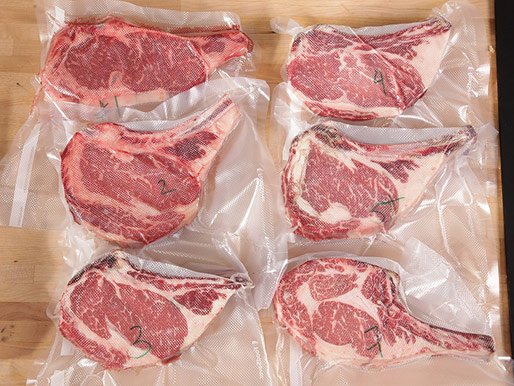
*14 days or less: Not much point. No change in flavour, very little detectable change in tenderness.
*28 to 45 days: Some real funkiness starts to manifest itself. At 45 days, there are distinct notes of blue or cheddar cheese, and the meat is considerably moister and juicier.
*45 to 60 days: Extremely intense flavours emerge of the richness of this highly aged meat, though some find it a little too much to handle for more than a bite or two.
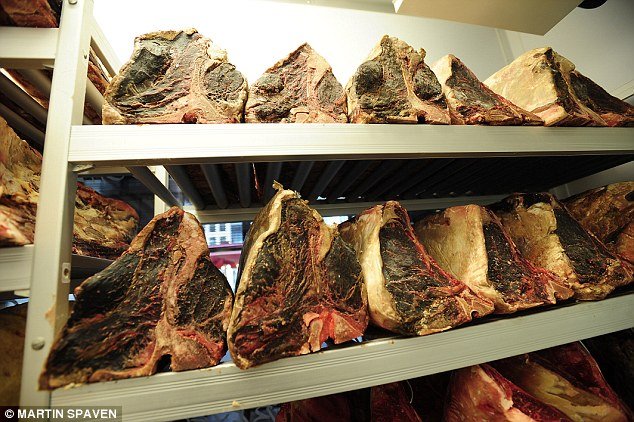
What about wet-ageing? What is it, and how does it work?
All fresh beef is aged for at least few days and up to several weeks to allow enzymes naturally present in the meat to break down the muscle tissue, resulting in improved texture and flavour. These days, most beef is aged in plastic shrink-wrap (Cryovacing) a process known as wet-ageing. Wet ageing is simple you put your beef in a Cryovac bag, and let it sit on the shelf of your fridge or, more likely, on refrigerated trucks as it gets shipped across the country for a few weeks.
The problem is that wet-ageing is nothing like dry-ageing.

For starters, there is no oxidation of fat in wet ageing, which means that there is no development of funky flavours. A minimal amount of flavour change will occur through enzymatic reactions, but they are minimal. Additionally, wet-ageing prevents the drainage of excess serum and meat juices. Tasters often report that wet-aged meat tastes "sour" more then anything.

Wet-ageing can offer the same tenderizing and moisture-retaining benefits as dry-ageing, but that's about it. In reality, wet-ageing is a product of laziness and money saving. It's easy to let that Cryovacked bag of beef from the distributor sit around in the fridge for a week or two before the bag is opened, allowing it to be called "Aged" and sold for a higher price. When you are being sold "Aged" meat, be sure to ask whether it's been dry-aged or wet-aged.
The other drawback to wet-ageing: It can't be carried out for as long as dry-ageing. It seems counter-intuitive, considering that a wet-aged hunk of meat is largely protected by the outside environment. But if even a smidge of harmful anaerobic bacteria makes its way into that bag, the meat will rot inside its cover, giving no indication that it's done so until you open it up.
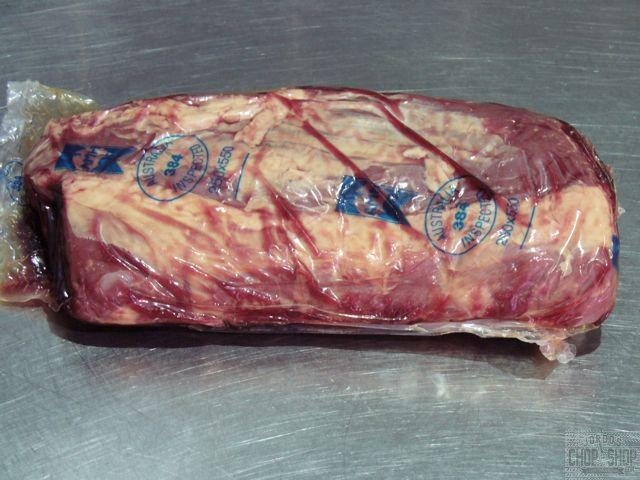
In Conclusion Which is Better Dry Aged Or Wet Aged Beef?
Honestly, it's a matter of preference. The biggest difference between the two kinds of meat is in the flavour. Dry-aged beef can be described as having a roasted, nutty flavour, while wet-aged beef can taste slightly metallic and lacks the same depth of flavour.
Unless the beef is specifically labelled as dry-aged, the meat you buy in the store has almost definitely been wet-aged. Most of us have come to associate the flavour of beef with wet-aged meat, to the point that dry-aged beef might not taste as palatable any more.
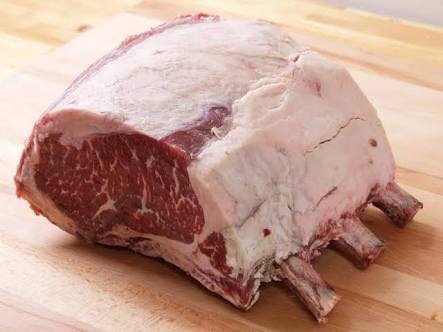
You should definitely try some dry-aged beef if you have the opportunity. It costs a lot more and is harder to find, but it's worth knowing that there are other options out there.
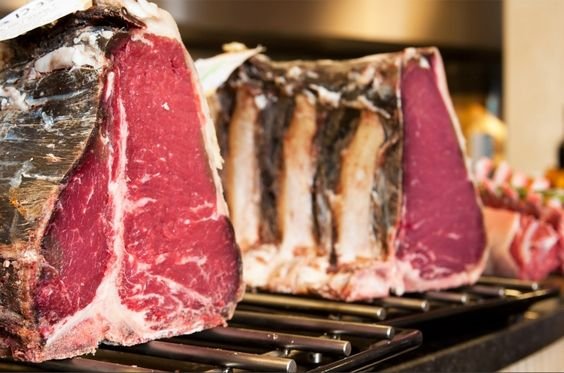
What do you prefer best dry aged beef or wet aged beef please let me know. EDIT: This is my second time i have posted this Dry age vs Wet age as I am still Learning out Steemit and did not no how to Tag Silly Mistake so in saying that any advice would be great also :)
Hi! I am a robot. I just upvoted you! I found similar content that readers might be interested in:
http://www.seriouseats.com/2013/03/the-food-lab-complete-guide-to-dry-aging-beef-at-home.html